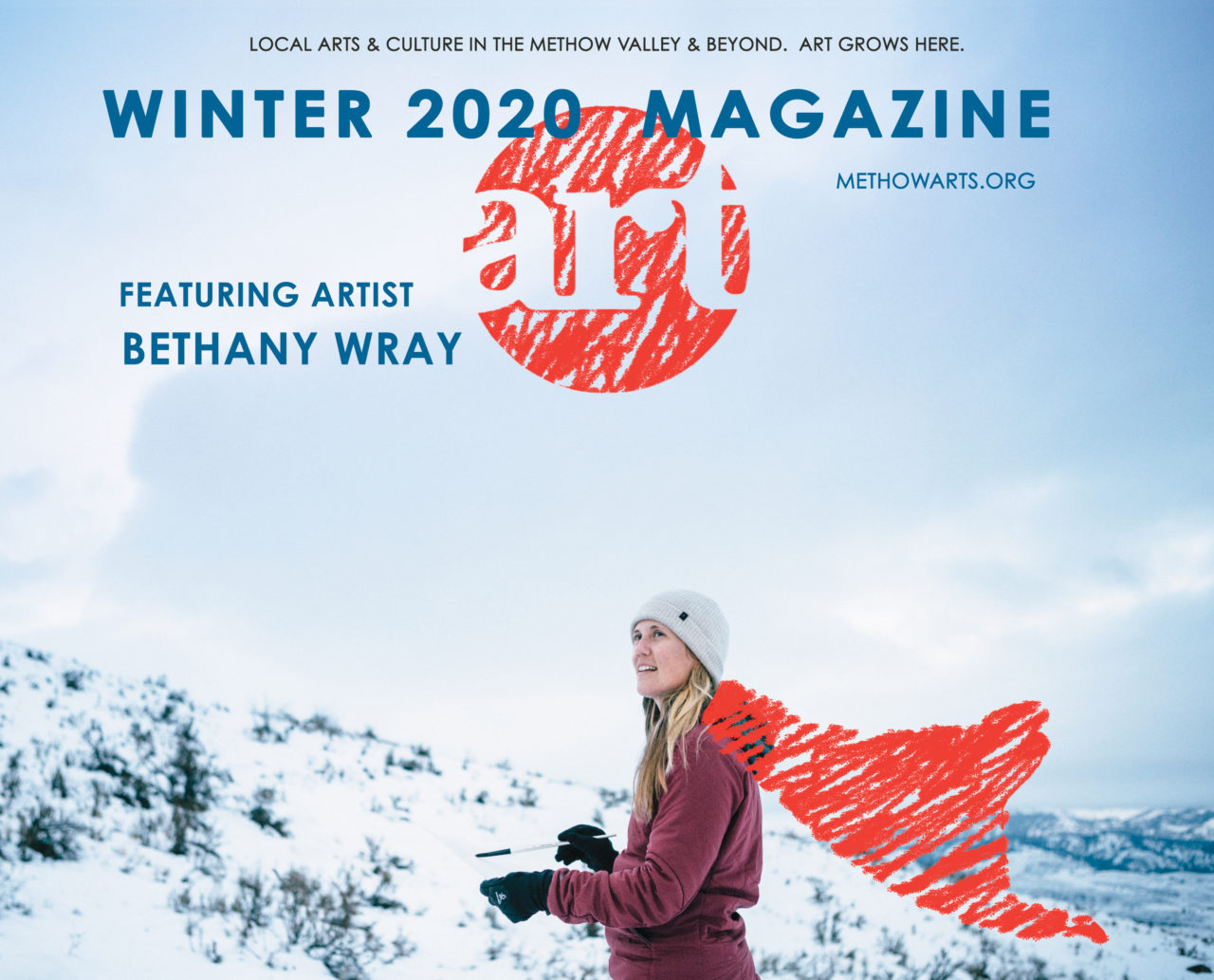
By Marcy Stamper
Photography by Sol Gutierrez
“Artists live multi-faceted lives. My life is definitely being pulled in three directions – teaching art at college and elementary school and – on the side – trying to run my own business as an artist,” Bethany Wray said. Wray specializes in watercolor landscapes, and sells cards, prints, and stickers based on her work.
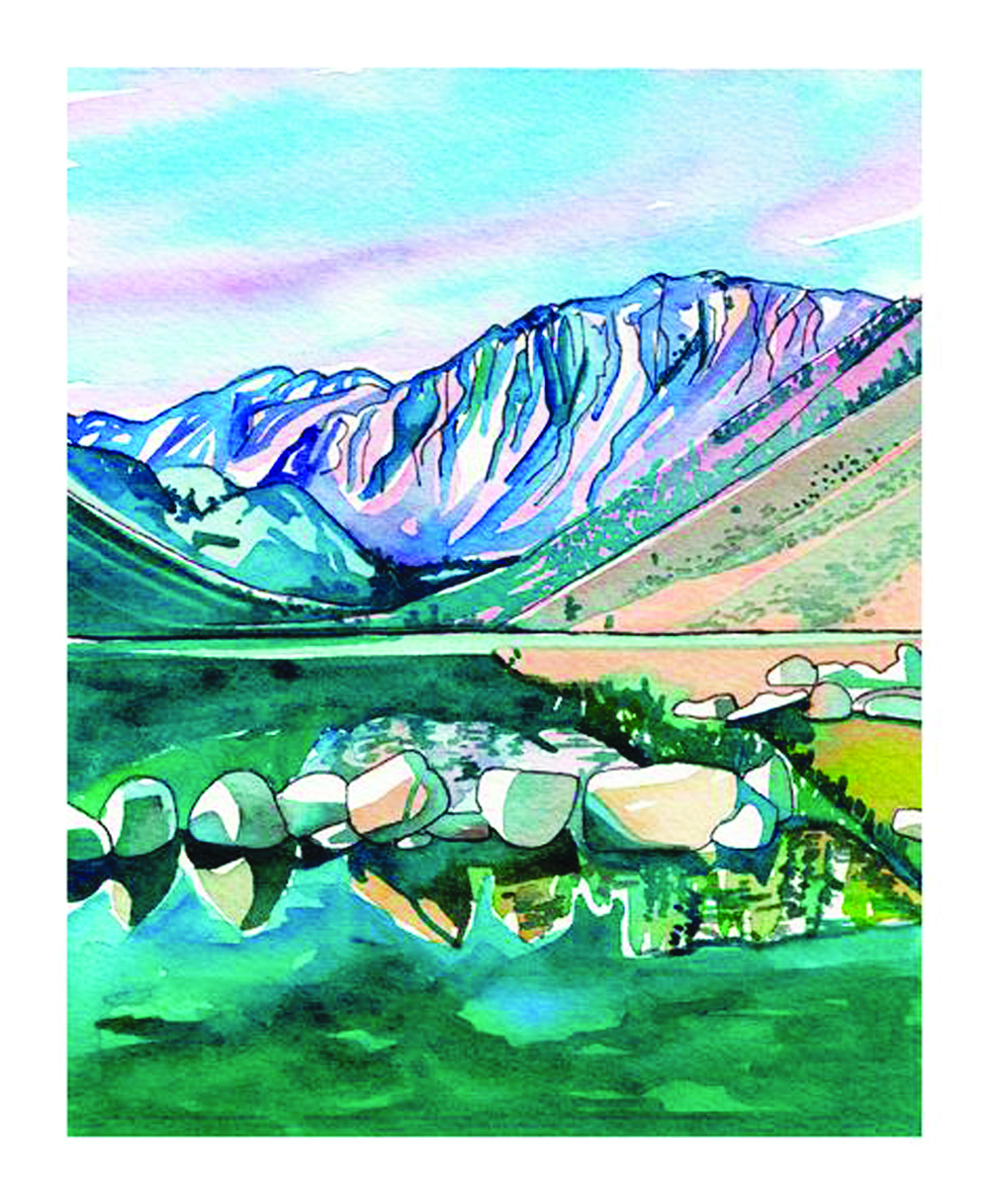
It may feel like being pulled in different directions, but there’s a consistent through line in Wray’s approach to art. Whether it’s her own art or how she supports others in their creativity, Wray embraces art as the underpinning of self-discovery.
Wray actually has two roles as a teaching artist at Methow Valley Elementary this year. She’s teaching kindergarteners through third graders as part of the Youth Arts Initiative (YAI – aptly pronounced “Yay!”). Earlier in the school year she also taught an arts residency through Methow Arts, working with fourth and fifth graders on projects where they express who they are and communicate their interests through art.
On the first day of school this year, Wray was in the classroom, working with fifth graders on their “That’s Who I Am” collages. The students mixed a personalized paint color to use as the backdrop for a collage of words and images that tells their story. The fourth graders are exploring their distinctiveness through self-portraits.
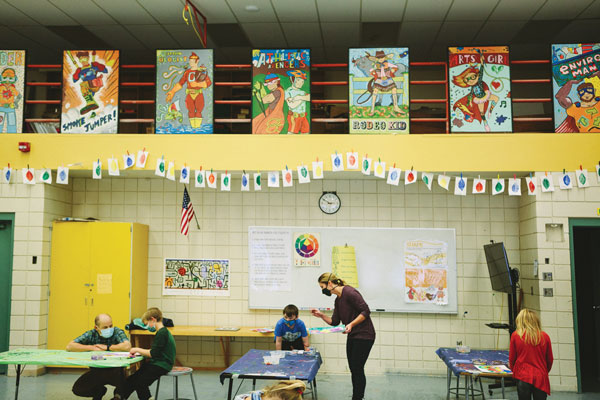
Wray knows how crucial it is for kids to get encouragement for their interests and encouragement – especially if they’re drawn to art. “Even as an undergraduate, I studied art with the intentions of later creating and teaching art,” she said. “That’s because of the role models I had – so many amazing art teachers who had such an influence in my life.”
While Wray has always been attracted to art, she didn’t have formal artistic instruction until college, where she received undergraduate and graduate fine arts degrees in painting. She was home-schooled from kindergarten through 12th grade, an arrangement that gave her time to experiment with art and to harness her own skills.
Everyone needs encouragement to follow their dreams, but those interested in art often face larger hurdles. “Some people say, ‘You’ll never make it – I hope you have a Plan B,’” she said. “But my parents always believed in my gift. It’s an incredible thing to have that kind of support.”
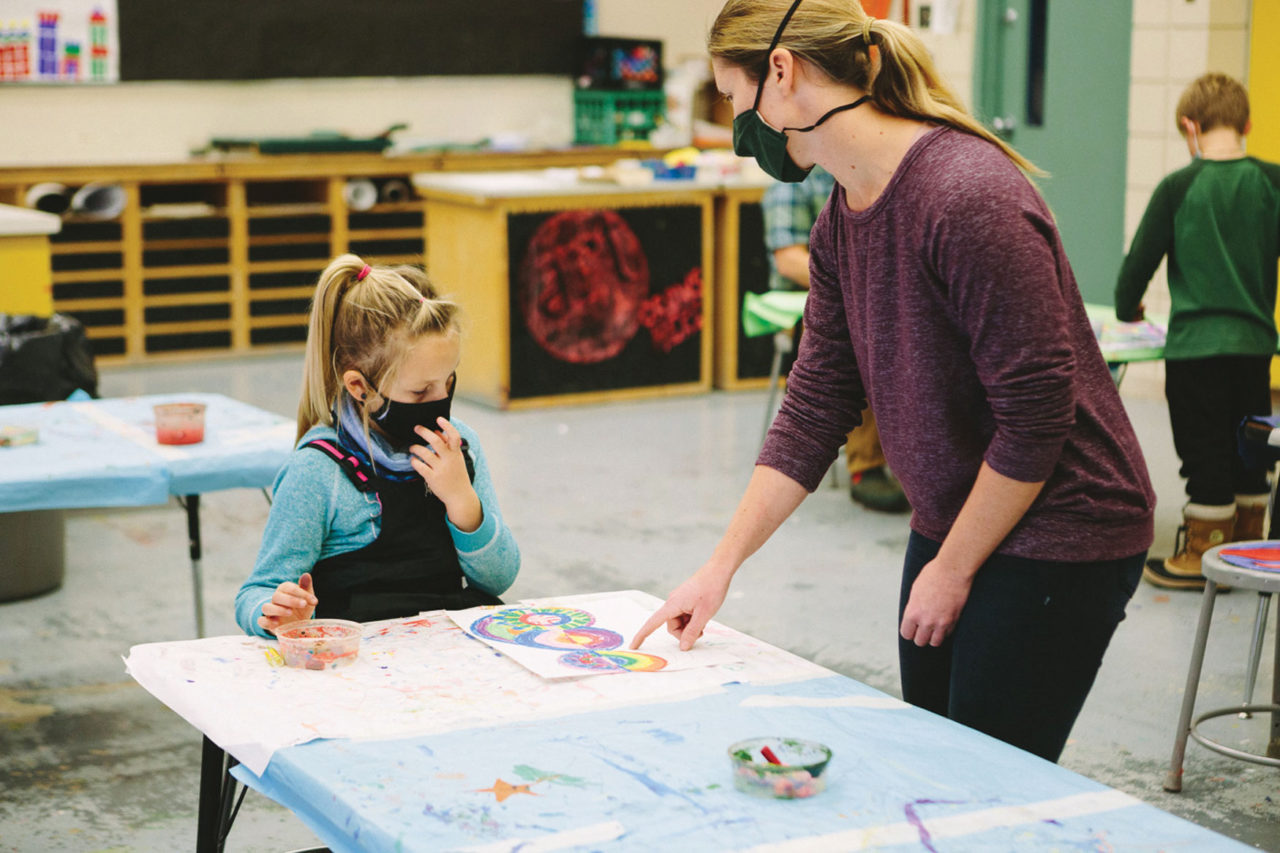
“That’s one of the reasons I love to teach – and especially to teach young kids, who don’t have years of experience telling them what they can and can’t do,” Wray said. “They get to experience who they are, and to develop the self-confidence and freedom to express themselves.”
So Wray has made it her mission to give her students the encouragement to follow their passion. At the same time, they get an important foundation in the elements and principles of art.
This is Wray’s first year teaching YAI at Methow Valley Elementary, but she taught the program in Omak last year. The Youth Arts Initiative is a three-year pilot project of Methow Arts funded by Leavenworth-based Icicle Fund, with the goal of having a teaching artist in schools – ideally for three years – to give students a foundation in the basic concepts of art. The school is supposed to take on the cost of the program as the years progress.
YAI aims to increase the access to and amount and quality of arts education – visual, dance, theater, and music – for K-6 students, both inside and outside the classroom. The underlying principle is that access to the arts benefits students in ways that go beyond the arts, improving their mastery of language and math, and enhancing skills in critical thinking, problem-solving, and communication.
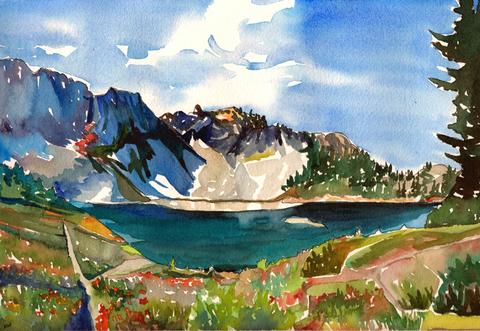
The curriculum begins with the elements of art such as line, shape and color and slowly integrates the principles of art like rhythm, movement and balance. The lessons also incorporate art history, focusing on a particular artist or art from different cultures. “I give it context to show that I didn’t just make this up, but that art is important throughout the world,” Wray said.
While studying concepts such as lines Wray’s students move from a straight line to zigzags, wavy lines, and curly lines, and then learn about patterns and abstraction.
Even a simple exercise with lines becomes a way for kids to discover their uniqueness. Wray asked students to think of an activity they like, and then to find a way to depict that movement using only lines. That could be a series of swirly lines to depict skiing down a slope. Without realizing it, the kids learn abstraction, since they can’t draw trees or a chair lift to illustrate the picture, Wray said.
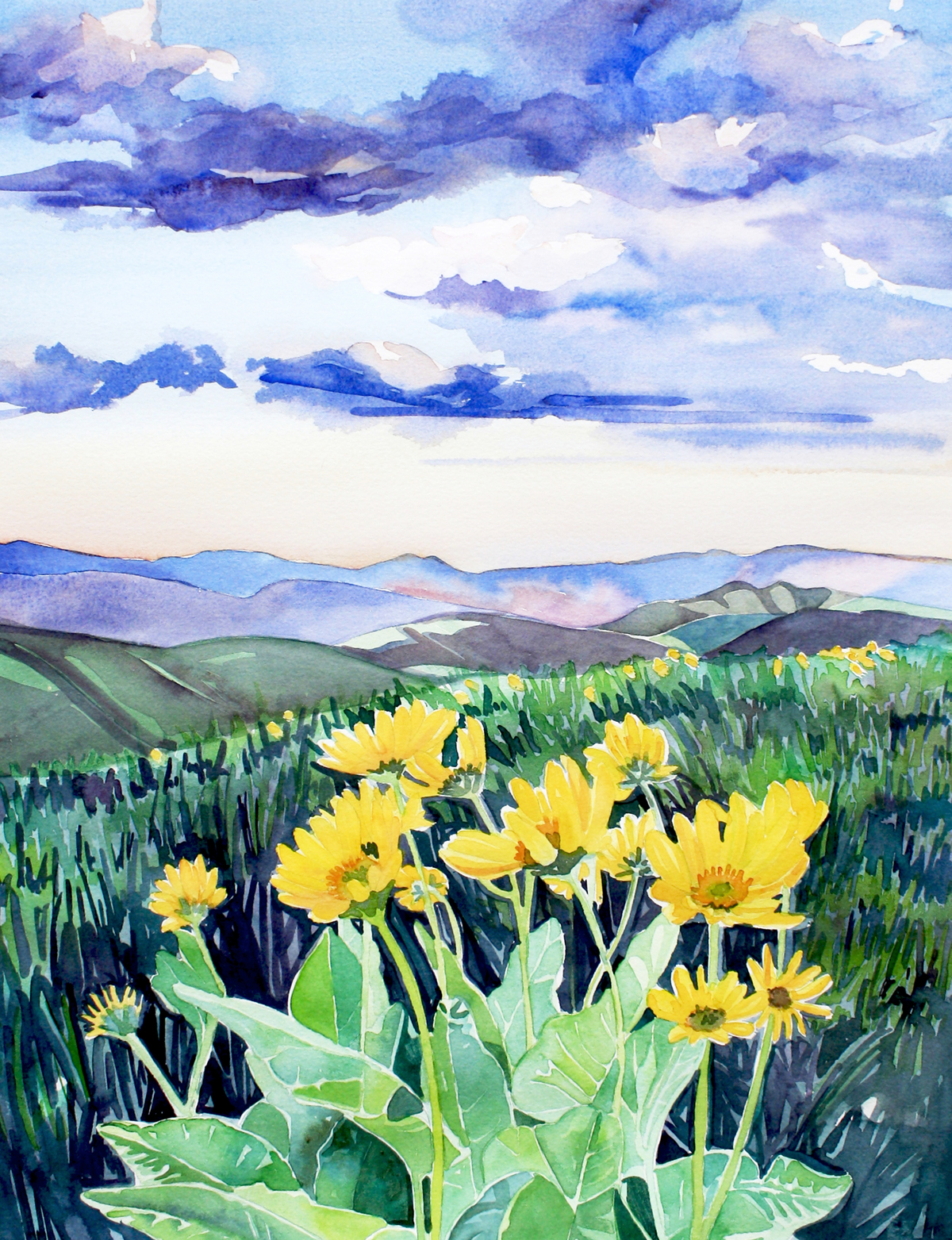
Wray also teaches two-dimensional design, drawing, and watercolor at Wenatchee Valley College. This year, she’s had to adapt to teaching entirely online.
Not having the ability to interact directly with students has been a challenge, she said. And building camaraderie in the classroom is more difficult since, instead of group critiques where they all discuss one another’s work, students send in individual written comments.
But it’s also been an opportunity to support students where they are, and to make art accessible for students who are working from home or caring for children, Wray said. So there’s no set class time – students can watch Wray’s video lessons at any time. She schedules time for individual feedback.
Completing the circle
Wray came to watercolors only five years ago, after pursuing other mediums and techniques. In college, she painted in acrylics and oils, worked with charcoal and pencil, and did collage. In graduate school, she created conceptual art installations and videos “centered on the exploration of desire and the formation of self.”
“You do weird, experimental things in art school,” she said. All those experiences helped her think critically about her art and how it shaped her identity.
But after the cerebral realm of graduate school, it was watercolor that helped Wray rediscover the joy and playfulness of art. “You draw on your background and all those voices, and have to sift through them to figure out which (ones) you are. But in watercolor,) I could choose what I wanted to be.”
“I like watercolor because I didn’t have someone who told me what to do with it,” Wray said. “It’s the one thing I had where I didn’t have this voice in my head saying, ‘This is what you’re supposed to do.’ I came to it fresh.”
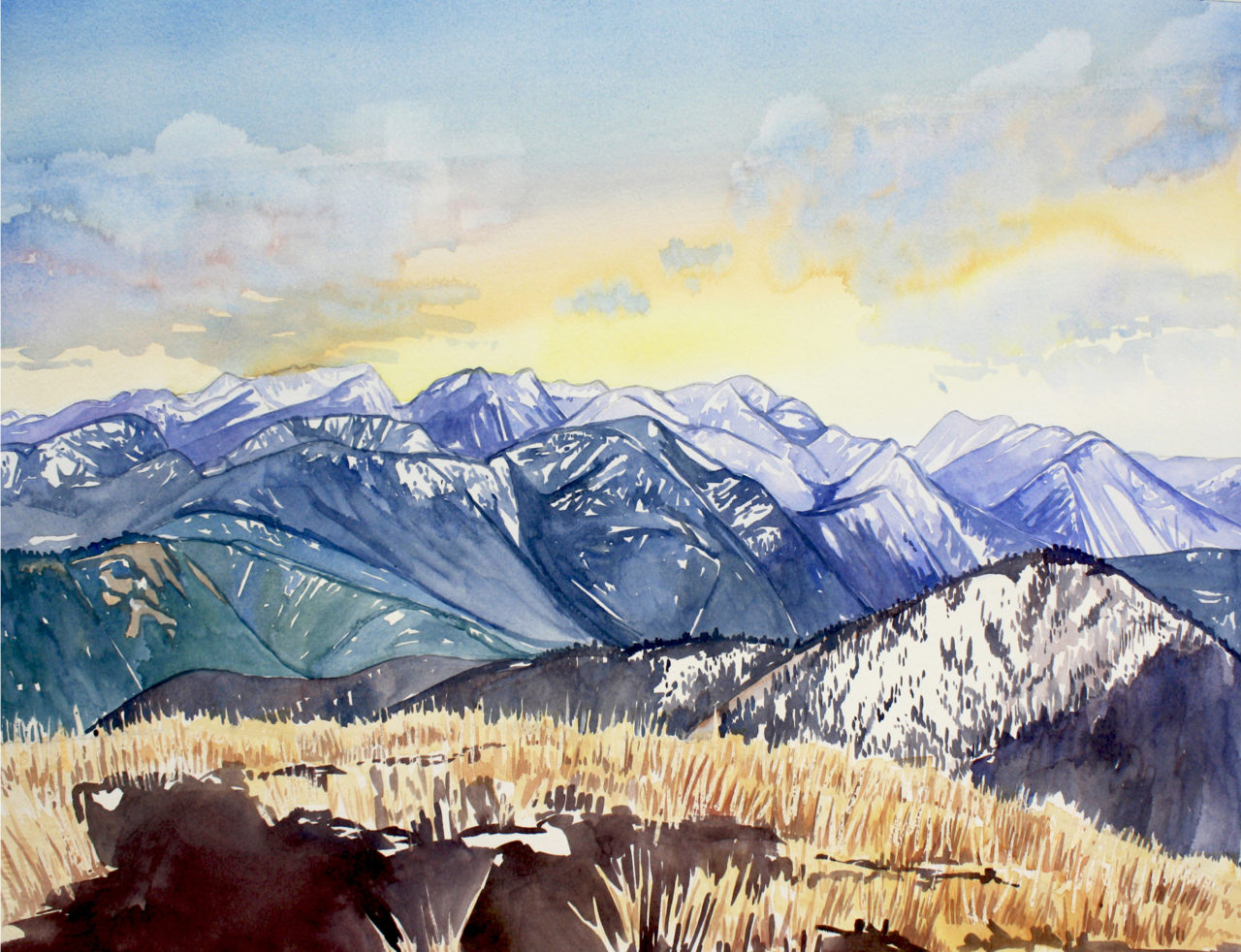
In fact, when she first started doing watercolor painting, it was something she did for herself, a satisfying way to capture her experiences in the mountains. But as people discovered Wray’s paintings, they found it resonated with their own time in nature and began buying her work.
“It’s so nice to be out there showing your work, and to have people connect and show admiration for it – it kind of completes the circle,” she said.
Wray finds fulfillment and inspiration in the intersection of art and nature. She loves plein air drawing and painting – creating art in the midst of the scene. “I’m happiest hiking with paper in my backpack, with the luxury of a few hours to paint,” she said.
But Wray acknowledged that that luxury can be easy to romanticize, since the great outdoors – with wind and rain, blistering hot sun, and biting bugs – sometimes interferes with making art. At those times, Wray snaps photos as a reference for painting in her studio.
Wherever she works, Wray starts with a pencil sketch of contour lines and then applies her watercolor on top of it. Many watercolor painters use a wet-on-wet technique, which produces a watery, translucent quality, with muted colors diffuse edges. Wray takes a different approach, applying watercolor glazes and letting each layer dry before she adds the next one. The technique results in saturated, luminous colors with distinct borders, which Wray often accentuates with a black outline.
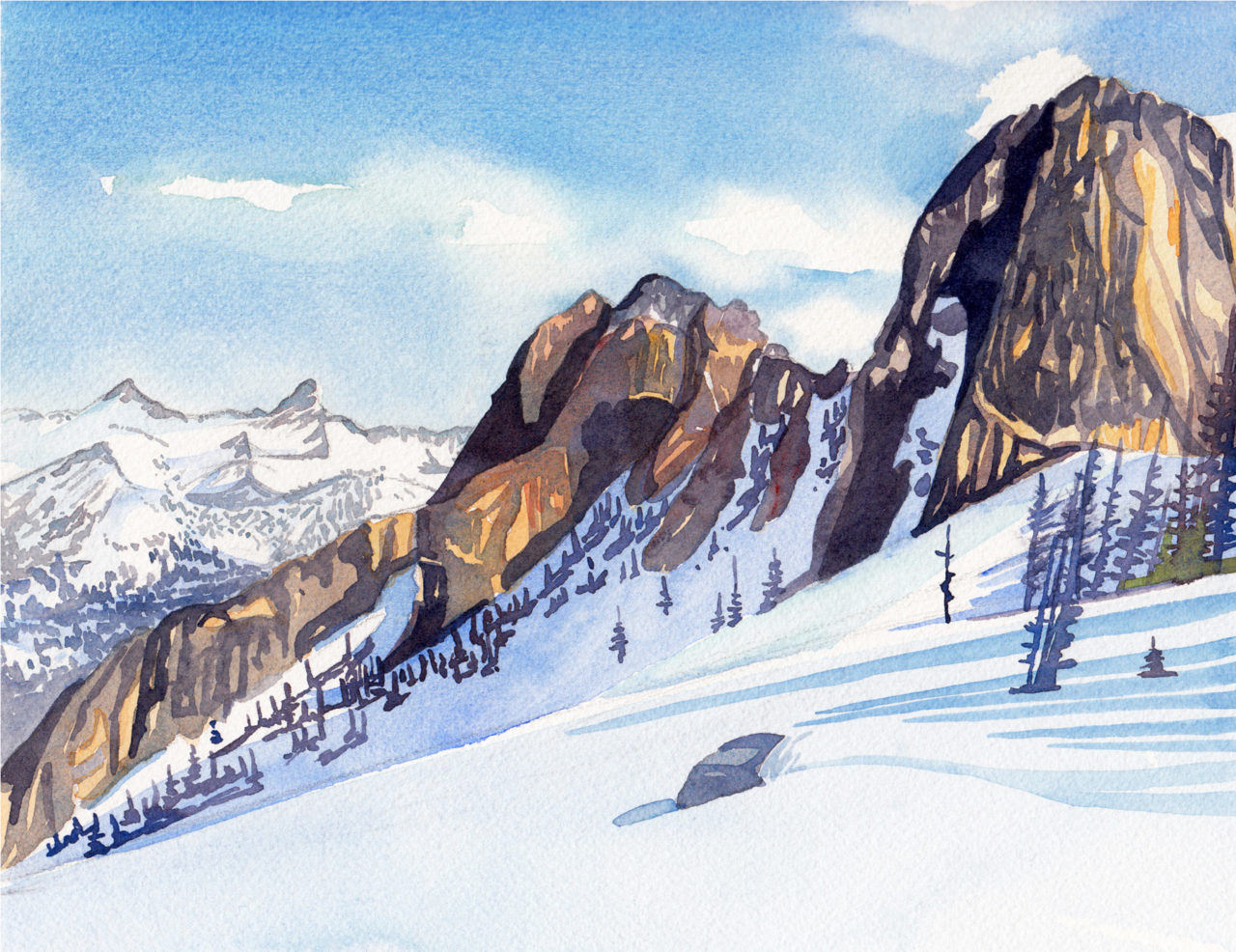
Wray’s paintings capture landscapes in the North Cascades near the Methow and Leavenworth, where she lived before coming to Twisp, as well as places from her travels. Her technique emphasizes the play of light and shadows on jagged peaks, reflections on alpine lakes, and the intensity of the colors in the mountains.
“The natural world is awe-inspiring and reminds us of our smallness, and how precious these places are and how fleeting time is. So I paint because beauty is worth it and remembering that it is special to be here is worth it,” she said.
Coming to the Pacific Northwest from southern California was inspiring and eye-opening. “I was surrounded by so much beauty that I couldn’t help but paint – I didn’t want to be cooped up in the studio,” she said.
The opportunities in these small, rural areas to show, sell, and teach art have been incredible, she said. “Artists are so well supported here,” she said.
Wray’s art will be on view at Studio A, a project of Methow Arts at 114 Glover Street, through mid-January, at Methow Arts’ Pop Up Holiday Market on Sat, Dec 19 and in Confluence Gallery’s Gems and Geology show through January 9. Her work can also be seen on her website at arrowleafstudio.com.